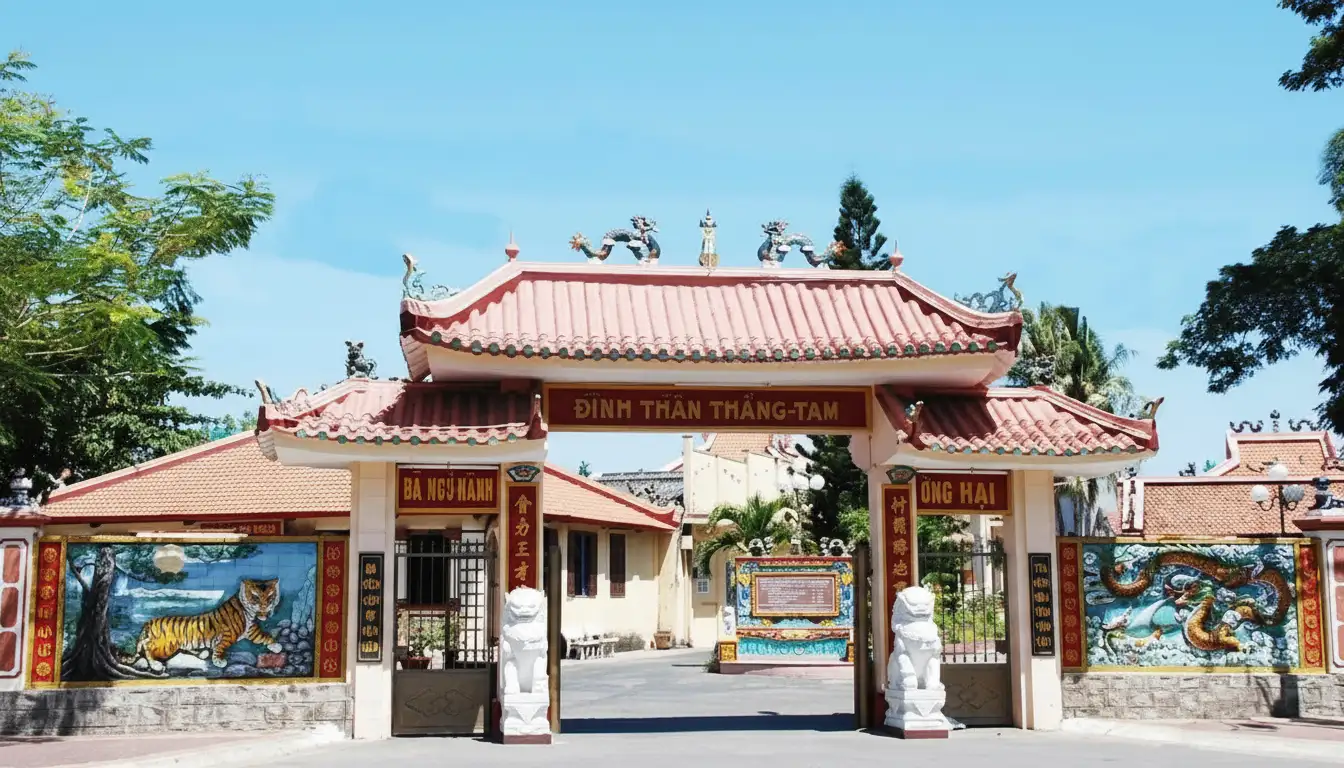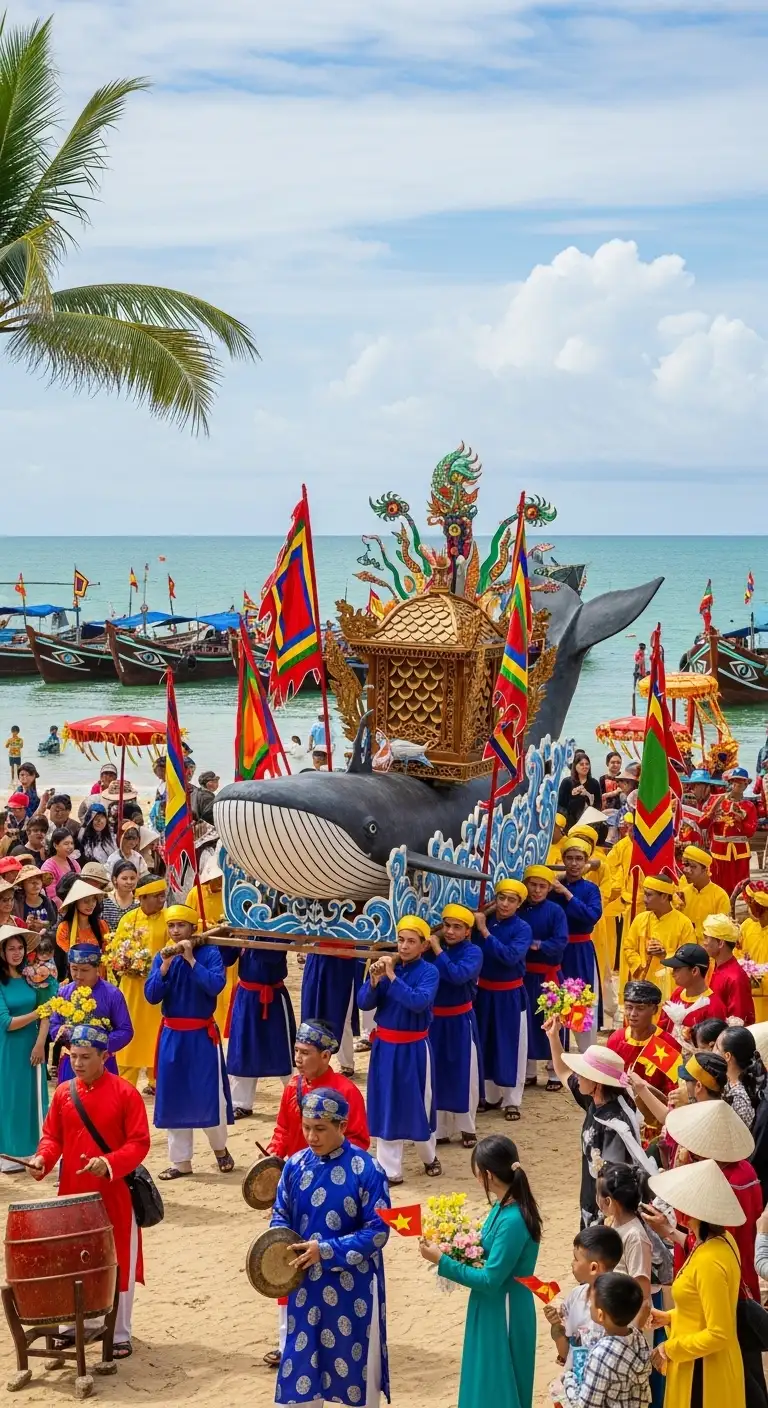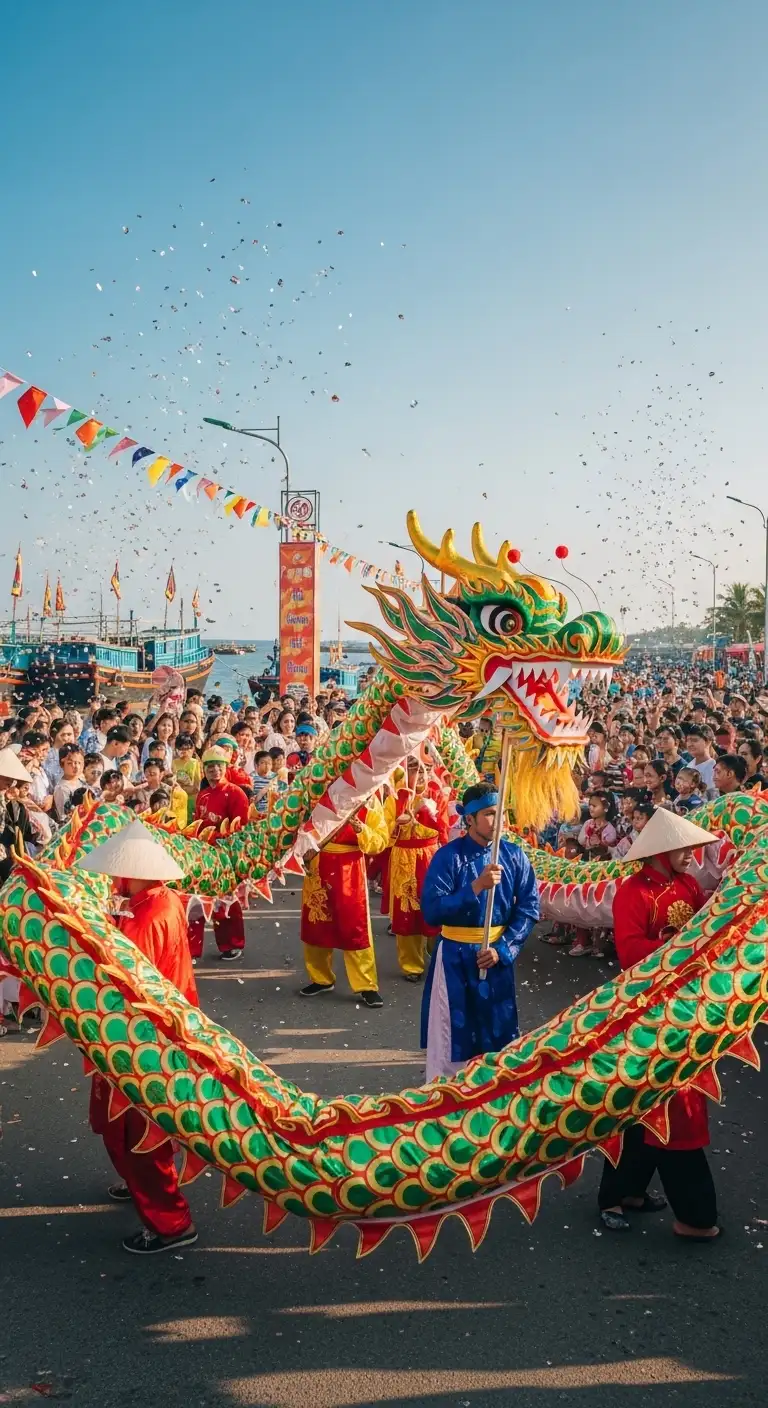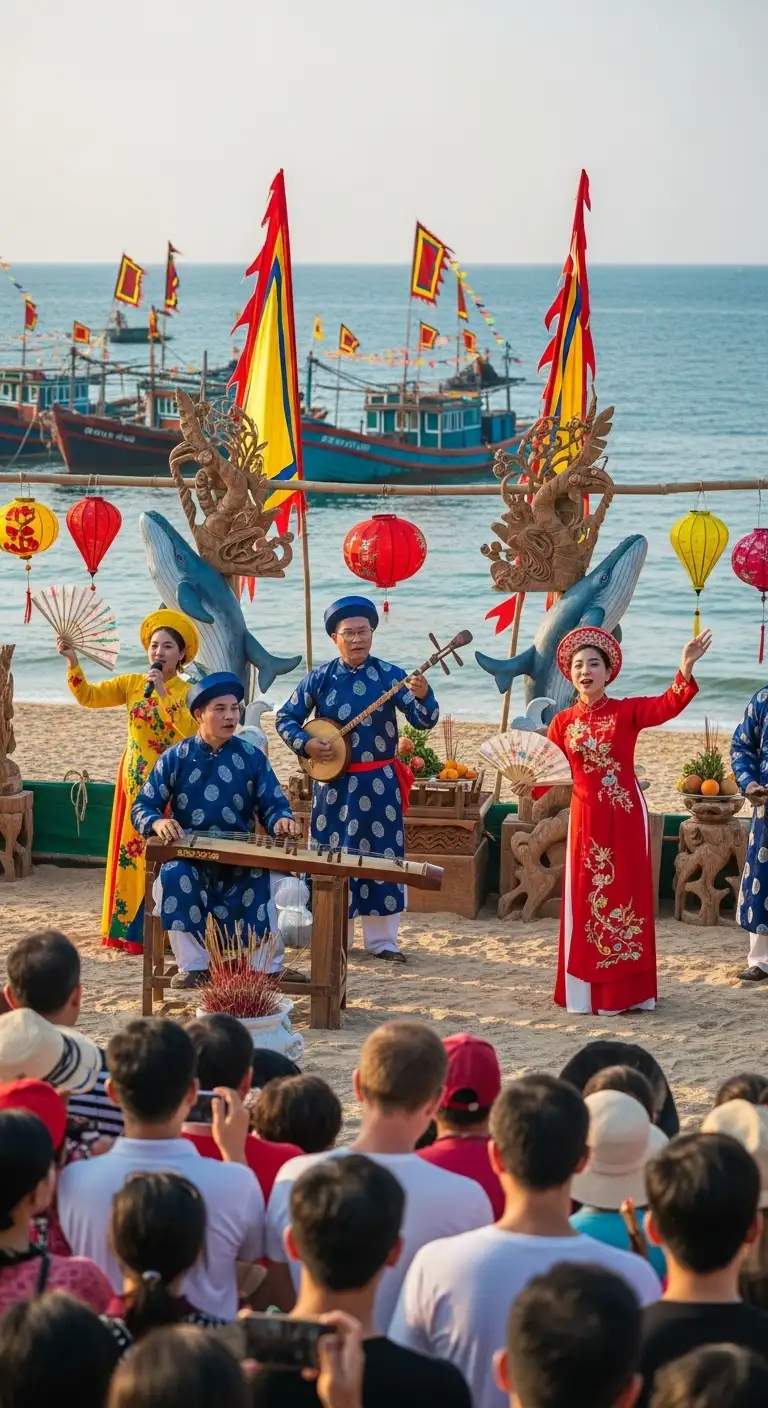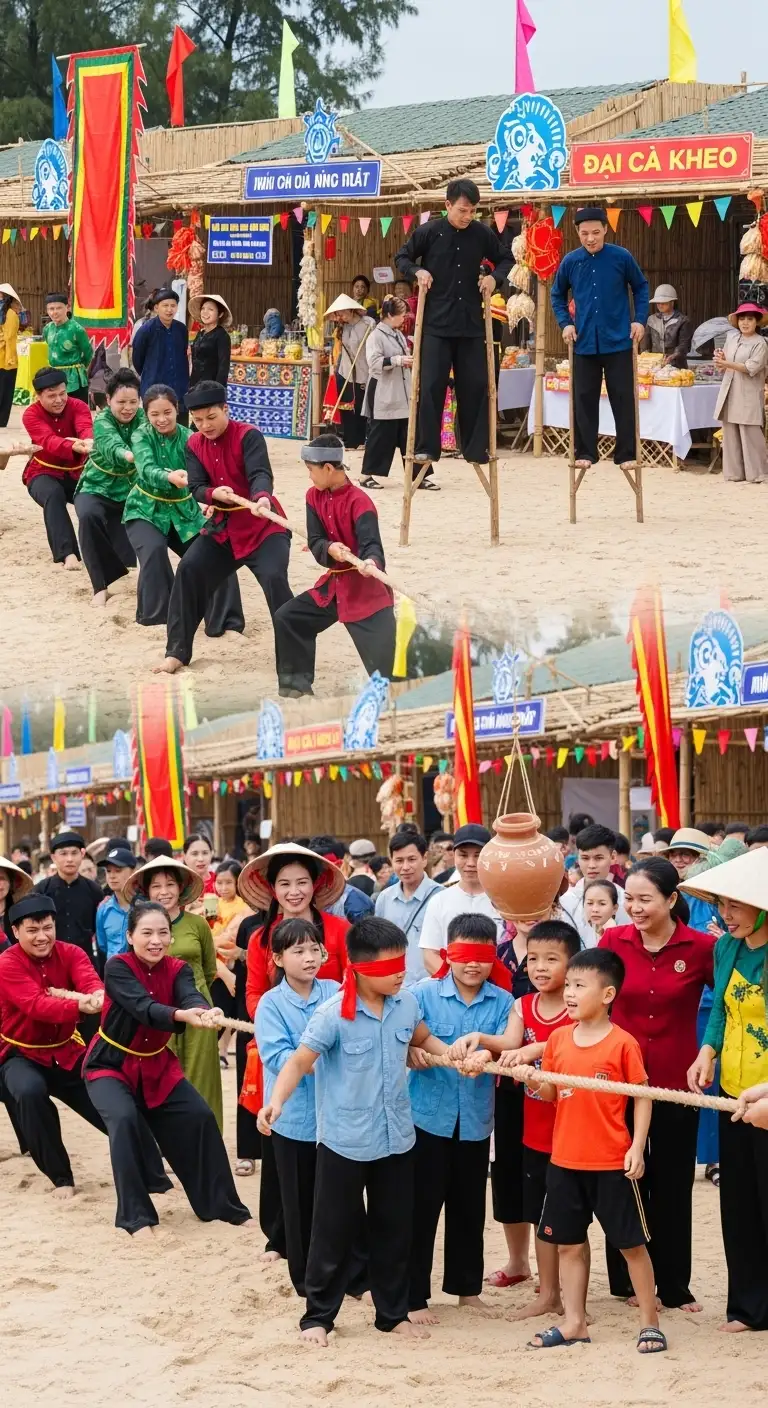Quick Facts
| Data Field (Title) | Content | Icon/Note |
|---|---|---|
| Vietnamese Name | Lễ hội Nghinh Ông (Thắng Tam Nghinh Ông Festival in Vũng Tàu) | Means 'Welcoming the Whale/Lord'. |
| Significance | National Intangible Cultural Heritage. | Honors the Whale God (Cá Ông - "Lord Fish"), the spiritual protector of fishermen. |
| Location | Vũng Tàu City, Bà Rịa–Vũng Tàu Province (The main activities center around Thắng Tam Temple/Dinh Thắng Tam). | A major coastal city in Southern Vietnam. |
| Timing | Annually, typically held from the 16th to the 18th day of the 8th Lunar Month. | Usually falls in September or October of the Gregorian calendar. |
| Purpose | To pray for calm seas, safe voyages, and a bountiful catch, expressing gratitude to the Whale God. |
I. Overview: Honoring the Guardian of the Sea
The Nghinh Ông Festival, also known as the Whale Worshipping Festival, is one of the most significant and colorful traditional events for Vietnam’s coastal communities. It is a heartfelt tribute to Cá Ông (Lord Fish)—the Whale God—who is revered as a benevolent deity believed to save fishermen from storms and shipwrecks at sea.
Rooted in ancient maritime folklore, the festival blends solemn spiritual rituals with vibrant folk activities, reflecting the deep-rooted cultural identity and dependence of the coastal people on the ocean.
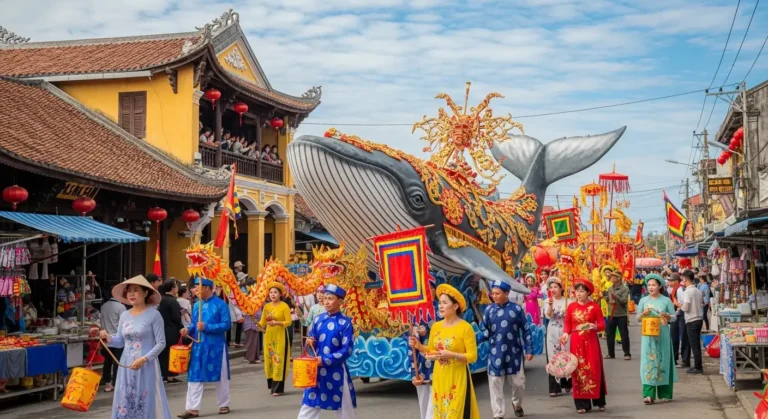
II. The Spiritual Core: Cá Ông (The Whale God)
In Vietnamese coastal belief, any whale, porpoise, or dolphin that washes ashore is treated with the utmost reverence, given a proper funeral, and buried in a dedicated temple (Lăng Ông).
Legend of Protection: Numerous tales recount fishermen being rescued by a whale in distress, leading to the belief that the creature is a divine protector (Nam Hải God or Southern Sea God).
Ritual Significance: The festival is centered around venerating the sacred bones of deceased whales, which are interred at temples like the Thắng Tam Temple in Vũng Tàu.
III. Key Ceremonial Activities
The three-day festival is divided into a ceremonial section (Lễ) and a festive section (Hội), creating a spectacular cultural experience.
1. The Sea Procession (Nghinh Ông)
The Highlight: On the main day, a grand procession of brightly decorated fishing boats sails out to sea to symbolically ‘Welcome the Whale God’ back to the temple.
The Route: Upon returning, the procession features an elaborate, solemn parade carrying the spiritual tablet of the Whale God through the city streets, accompanied by traditional music, dragon dances, and people in festive attire.
2. Sacred Rituals
Ancestral Offerings: Solemn ceremonies are held at the main temple (Thắng Tam Temple) to offer prayers and thank the Whale God, the founding ancestors, and national heroes for their protection.
Ritual Offerings: Offerings typically include non-seafood items like pigs, sticky rice, wine, and flowers, as a mark of respect to the guardian of the sea creatures.
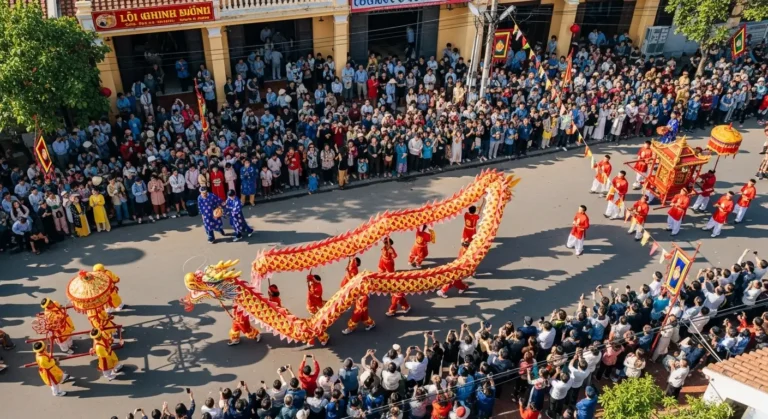
IV. Festive & Cultural Program
The spiritual ceremonies are followed by days of joyful community celebration:
Traditional Performances: Visitors can enjoy classical Vietnamese opera (Hát Bội or Tuồng) and unique local singing and dancing known as Hát Bá Trạo (a traditional chant performed by fishermen to welcome the boat back to shore and praise the sea god).
Folk Games: The streets come alive with folk games and competitions that mimic the daily lives of fishermen, such as net weaving, rowing races, and martial arts demonstrations.
Atmosphere: The festival is a powerful time for family reunion and community bonding, attracting thousands who come to partake in the festive atmosphere and pray for good fortune and prosperity for the coming year.
